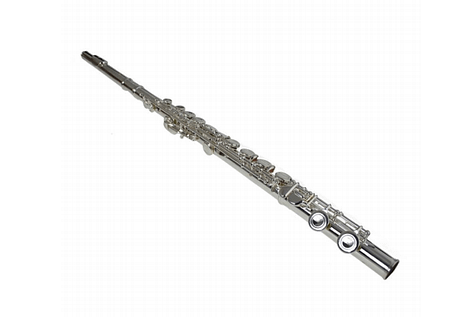-

Creating Forward Motion In Phrasing
Heather Hoefle | November 12, 2021Instead of counting 1-2-3-4, 1-2-3-4, count 2-3-4-1, 2-3-4-1. This helps push the music over the barline. Heather Hoefle Homewood SD 153 – Flossmoor, IL Read More... -
Developing Balance Within Each Section of the Band
Robert W. Smith | October 9, 2021As you work to develop and teach balance within sections of the band, try rearranging the seating based on part assignments. Instead of sitting together by part (i.e. 1st, 2nd, 3rd), try seating them in integrated trios. For example, place a 3rd clarinetist in the traditional first chair. From there, assign chairs by integrating parts […] Read More... -
Sing & Show
SBO Staff | August 13, 2021“I have my trombone players sing note names to me as they show me the correct positions. A variation to this is to have them say position numbers as they show the correct positions. This trains students’ note reading and slide positions simultaneously, and prevents them from having to write note names or positions into […] Read More... -
June 2021, Playing Tips: Policing the Posture
SBO Staff | June 11, 2021When students sit up, their chest cavity will be more open and allow them to take in even more air. To demonstrate this, hold up an empty disposable 12oz plastic water bottle, which represents their lungs. Squeeze the water bottle with your hand to resemble our lungs when we are sitting with poor posture. With […] Read More... -
Keep It Warm
SBO Staff | May 4, 2021Begin each rehearsal with a warm-up routine that focuses on some basic playing. This will develop good tone, intonation, blend and balance, technique, and it will engage the students to develop deeper listening skills. There are many good ensemble method books that can be incorporated to help a director initiate this phase. All in all, […] Read More... -
Clarinet “B for Bulls Eye and Both Pinkies”
SBO Staff | April 6, 2021To accelerate learning for B above the break, I put 1/4” round color coding labels on both pinky keys. Students learn that B is the bulls eye of the music staff and played with both pinkies’. Michel Nadeau Burr Intermediate School East Northport, NY For a PDF of this playing tip, with SBO’s Tone […] Read More... -
To ‘daah’ or not to ‘daah’
Steven Holgate | March 6, 2021“One of the most common contributions to a non-characteristic brass sound from a young player is the approach to articulation. Many use a ‘default’ articulation, such as ‘poo,’ ‘thaw,’ between the lips ‘pthoo,’ or just a ‘whoo’ with no tongue at all. The easiest ways to identify the style of articulation that a student is […] Read More... -
Walk It Off!
Mike Lawson | January 8, 2021“When in the final stages of preparation for any form of concert or performance, be sure to allow your students the opportunity to execute a ‘walk-through’ of the event.
Read More... -
Tape Your Flute
Mike Lawson | December 3, 2020“To avoid some confusion for beginning flute players’ finger position, I put a small piece of masking tape on the first and third button of the left-hand portion of the flute. The tape is removed after a week or so when the players can find the natural finger position.”
Read More... -
Essential for Embouchure
Mike Lawson | October 28, 2020Young clarinet players often play with unsupported, flat sounds in the upper register. This is often caused by a mushy bottom lip and chin. Ask your clarinetists to imagine they are looking in a mirror and putting on either lipstick or Chapstick.
Read More... -
Getting Good Air
Mike Lawson | October 1, 2020Characteristic tone and tuning start with air. Unrestricted air requires use of the diaphragm, posture that allows for expansion in the abdomen, a relaxed and open throat, and no tension in the shoulders or neck. Good air should move a piece of paper held in front of the face from vertical to horizontal.
Read More... -
10-Minute Brass Warmup
Mike Lawson | September 2, 2020Brass players warm up on your mouthpiece only. Play descending major arpeggios chromatically in whole notes from tuning Bb to as low a pedal tone as you can. After a quick rest, begin an ascending arpeggio pattern from low Bb concert to as high as you can without changing your embouchure. Tone, range and endurance will improve. Takes about 10 minutes.
Read More...
Warning: Undefined variable $additional_loop in /home/sbomagazine/public_html/site/wp-content/themes/timeless2021/archive.php on line 103
Warning: Attempt to read property "max_num_pages" on null in /home/sbomagazine/public_html/site/wp-content/themes/timeless2021/archive.php on line 103



















